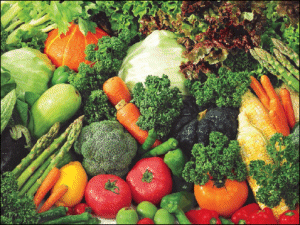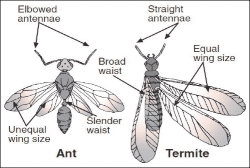

To send a message to an author, click on the author's name at the end of the article.
This Month in Ag Connection | Ag Connection - Other Issues Online
Spring has sprung and now we should be in full force of shaking off that cabin fever and getting our hands and knees dirty with garden soil. When considering the variety of weather patterns that we have experienced in the last 8 months, it should be obvious why Missouri is considered a transitional climate area.
A great resource is available through MU Extension publication G6201- Vegetable Planting Calendar (online: http://extension.missouri.edu/p/G62 01 ).
This guide lists the most common vegetables grown in Missouri and provides
approximate row planting needs based upon the number of people you intend to
feed. It also lists the amount of seeds needed, row width, inches between
 plants, planting depth and the vitamin content for each. Vegetables are the
primary sources of vitamin A and C and other vitamins and mineral while
providing the bulk in our everyday diet.
plants, planting depth and the vitamin content for each. Vegetables are the
primary sources of vitamin A and C and other vitamins and mineral while
providing the bulk in our everyday diet.
The vegetables are listed with the variety choices that are adapted to our Missouri climate. Choosing adapted varieties will help the plant be as healthy as possible. The guide also indicates the correct timing to plant, whether you are looking at a spring garden or a fall planted crop. The tomato section also indicates the disease resistances of various varieties to Fusarium and Verticillium wilts that are a common occurrence in our climate.
Improve your gardening successes this season by selecting adapted varieties and keeping plants as healthy as possible. From asparagus to watermelon, this guidesheet is a must for anyone interested in gardening at any scale.
Source: Todd Lorenz, Agronomy Specialist
This Month in Ag Connection | Ag Connection - Other Issues Online
Meat Rabbit Production: Many people are considering raising meat rabbits in their backyard for personal consumption due to their small size and relatively easy care. Prior to purchasing any livestock, it is important to gather information. This is a short discussion of a few of the important aspects of raising rabbits for meat.
Housing: Rabbits can withstand cold weather betterv than hot weather. Outside cages need to be placed in the shade with a roof to provide protection from rain, wind, drafts, dampness, and direct sun during the hot summer months. The temperature within the hutch should not reach more than 85° F to prevent death. A couple of options to keep a rabbit cool include: placing a gallon jug of frozen water in the cage, hanging long wet towels on the sides of the cage and placing a fan near the cage but situated so it is not directly blowing on the rabbit. During colder weather, be sure to protect from drafts, but ensure proper ventilation. Hutches can be made of wood or wire. Wire cages are preferable for breeding does and weaned litters. Size varies but the general rule of thumb is to provide _ square foot per pound of body weight. Each doe with a litter should have six square feet of space. Pregnant does may need a plastic mat inserted over part of the wire floor for support. Hutches should be cleaned once a month using one cup bleach in one gallon of water. Nest boxes should be slightly larger than the doe. A general practice is approximately three inches longer than the doe and approximately two inches wider. The height should be 9-12 inches for medium to larger breeds.
Breeds: The three most popular breeds for meat production are
New Zealand White, Californian, and Florida White, with the first two being the
most widely used. Mature New Zealand does weigh 10-12 pounds and bucks weigh 9-
 11 pounds. The average litter size is 8-10 kits. They are known for their calm
and docile demeanor. Mature Californian does weigh 8.5-10.5 pounds and bucks
weigh 8-10 pounds. The average litter size is 6-8 kits. The Florida Whites are
smaller with does weighing 4-6 pounds. This breed is popular for home meat
production due to their compact, meaty bodies.
11 pounds. The average litter size is 8-10 kits. They are known for their calm
and docile demeanor. Mature Californian does weigh 8.5-10.5 pounds and bucks
weigh 8-10 pounds. The average litter size is 6-8 kits. The Florida Whites are
smaller with does weighing 4-6 pounds. This breed is popular for home meat
production due to their compact, meaty bodies.
Nutrition: A commercially prepared rabbit pellet at 16-18%
protein will provide all the nutrition needed and should be fed daily. Do not
overfeed and remove uneaten pellets daily. Follow the feed label's directions on
feeding recommendations. Gradually increase feed intake when a doe is confirmed
pregnant. A couple days prior to kindling, cut down on the amount of feed given.
The first day after kindling, feed the doe only 2-4 ounces to prevent caked
udders and then increase gradually. Feed the doe and litter all they will eat
each day, and continue feeding the litter all they want after weaning. Ensure
fresh water is available at all times. A doe and litter can consume one gallon
 of water a day. Water bottles can be used during warm weather and metal pans or
crocks should be used during cold weather.
of water a day. Water bottles can be used during warm weather and metal pans or
crocks should be used during cold weather.
Reproduction: Does reach maturity approximately 30-60 days prior to bucks, with medium sized breeds reaching maturity at 6-7 months of age, and larger breeds at eight months or more. The vulva of a doe in heat will usually turn purple to reddish pink in color and appear to be somewhat swollen. Does are in heat 14 out of 16 days and are induced ovulators, ovulating approximately one hour after mating. When ready to mate, take the doe to the buck and remove after mating occurs. Mate again 8-12 hours later to increase conception rate and litter size. One mature buck can mate with 1-2 does daily. Ten to 16 days after mating, palpation can determine if she is pregnant. At day 28 of gestation place a nest box in the cage with straw or other clean bedding. Gestation length is approximately 31-35 days. Once the doe kindles, remove bloody masses and dead kits. Check the teat to kit ratio and foster if needed. Check the nest box daily and clean when needed. The nest box can be removed at 15-21 days post-kindling. The kits will be ready to wean on day 30. Market weight for kits is 4.5-5 pounds which should be reached by eight weeks.
Health: Ears should be cleaned when needed with cotton or wool swabs and olive or baby oil. A healthy rabbit's nose will be dry. The nails should be clipped when needed to prevent overgrowth, but be sure not to cut too short. External parasites affecting rabbits include: flies, fleas, and mites. Internal parasites are usually not a major problem. Cleaning and sanitation will help prevent some of these. Remove droppings daily and at least once a month, clean and disinfect the cage and tray by using a mild bleach solution. Be sure to rinse well and expose to sunlight until dry. For information on the health of rabbits, contact your veterinarian.
Rabbit meat is delicious and healthy and when raised in the backyard, can become a great activity for the whole family to be involved in.
Author: Heather Smith, Assistant Livestock Specialist
This Month in Ag Connection | Ag Connection - Other Issues Online
Swarming flights occur in Missouri during the spring months, usually on a warm, sunny day following rain. Sometimes, termite swarmers are mistaken for ant swarmers during this time, but the two are easily distinguished from one another. Differences in body form between winged termites and winged ants.
Winged termites are distinguished by:

Winged ants are distinguished by:
MU Extension has two guide sheets available online or hard copy with biological and management information about Ants and Termites.
Ants guide sheet 7392: http://extension.missouri.edu/p/G73 92
Subterranean Termites guide sheet 7420: http://extension.missouri.edu/p/G74 20
Source: Joni Harper, Agronomy Specialist
This Month in Ag Connection | Ag Connection - Other Issues Online
Let's discuss CRAT and CRUT. While they sound like a bad medical condition, these terms are actually acronyms for two tax management planning tools. CRAT is the acronym for charitable remainder annuity trust and CRUT is the acronym for charitable remainder uni-trust. While there are a number of ways for making charitable transfers, from the financial security and income tax saving perspectives, CRAT and CRUT have a lot to offer.
CRATs and CRUTs almost allow you to have your cake and eat it too. Today with many farmers nearing retirement age, the realization of the potential income and self-employment taxes on the liquidation of assets (inventory, equipment, and perhaps land) hits home. For example, many farmers enter retirement with a year's worth of carryover commodities with few expenditures to offset the income, the equipment has little if any tax basis, and the land typically has a very low tax basis. The first year of retirement the farmer could have a burdensome tax bill.
Instead of selling these assets outright, they could be transferred to a charitable trust. The trust would dispose of the assets and since it is a charitable trust, would not be subject to income tax. These trusts are designed to make annuity payments to the grantor (farmer) for a given period of time with the remainder going to the charitable organization. The grantor will only be taxed on proceeds received from the trust and the taxation will depend on the character of the assets transferred to the trust. If inventory is transferred to the trust, a substantial benefit is the payments received from the trust will not be subject to self-employment tax.
These trusts provide you with an income stream as a percentage of the value of the trust assets. For example, that might be five percent per year for a time certain or the rest of your life. At the end of the annuity, whatever property remains in the trust would go to your designated charity. Even though the charity won't get the trust assets until the trust annuity term ends, you are entitled to a current income tax deduction for the present value of the estimated remainder interest of the property placed in the trust for charity (an exception would be for inventory). The value of the remainder interest is based upon published actuarial tables and interest rates. The older you are when the assets are transferred to the trust, the greater the remainder interest value for the charity. These tables also provide for joint lives, so the trust could be established to pay the fixed percentage income to you for life, then for your spouse's life, with the remainder interest going to the charity upon the last to die.
The charitable remainder uni-trust (CRUT), for the most part, only varies from the charitable remainder annuity trust in that the periodic percentage payout is based on each year's value of the trust, rather than the value of the trust at the time it was established. This feature provides some income protection from inflation.
These types of transactions are gaining popularity with people who will have substantial income tax liability in retirement and/or desire to recognize charities in their estate plan. While CRATs and CRUTs have many advantages, they should be utilized only after due consideration - to insure they are compatible with your income and estate planning goals and objectives.
Source: Parman R. Green, Ag Business Specialist
This Month in Ag Connection | Ag Connection - Other Issues Online
If you are considering new plantings or revitalizing existing favorite family fruit trees or grapevines, staying current on the wide array of insects and diseases that affect fruit production will benefit your overall harvest. This is the time of year when University of Missouri Extension offices around the state start receiving phone calls on "what is wrong with my fruit trees". One of our greatest resources in addressing these questions is MU Guidesheet- Fruit Spray Schedules for the Homeowner- G6010 (online: http://extension.missouri.edu/p/G60 10).

This guidesheet discusses a plethora of insects and diseases associated with pome fruits (apples and pears), stone fruits (peaches, nectarines, plums, apricots and cherries), strawberries, raspberries, blackberries, grapes, blueberries, gooseberries and currants. One of the great attributes to this guidesheet is it illustrates the developmental stages of the plant and indicates the associative pest or disease with the correct control materials. For many of the pests, a brief description of the damage is listed.
Keeping your plants healthy goes a long way in warding off insect and disease pressures. Additional information is provided on cultivar selection for those adapted to Missouri soils, climate and intended use. More information is provided on application equipment, pesticide use and safety in the event that you have to utilize chemical control.
Source: Todd Lorenz, Agronomy Specialist
This Month in Ag Connection | Ag Connection - Other Issues Online
Publishing Information
Ag Connection is published monthly for Northeast and Central areas of Missouri producers and is supported by the University of Missouri Extension, the Missouri Agricultural Experiment Station, and the MU College of Agriculture, Food and Natural Resources. Managing Editor: Mary Sobba.